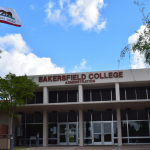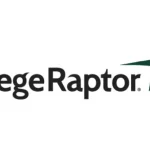The Great Resignation has made its mark across various industries, and higher education is no exception. Startling statistics reveal that well over 50 percent of higher education employees are likely or very likely to be searching for new job opportunities within the next year.
With the intended turnover rate in higher education being around 10 percentage points higher than the average for employees generally, it is clear that the challenges presented by employee turnover in this sector must be tackled head-on.
In this article, we will explore these challenges and highlight how AI-powered solutions can help colleges and universities combat them.
Three Challenges From Employee Turnover in Higher Education (& Their Solutions)
Challenge #1: More Work, Less Resources
When employees leave, those who remain are burdened with picking up the extra workload, eventually leading to burnout and potentially even higher turnover rates among employees.
The Solution: AI-powered technology, such as chatbots, can alleviate the pressure by automating basic and time-consuming tasks. Take Bakersfield College, for example, where Ocelot’s AI-Powered Chatbot has helped the college save 587 weeks of staff time by answering over 424,237 questions. Without the chatbot, employees would have had to handle each question individually, diverting them from other vital tasks requiring their immediate attention.
By delegating repetitive inquiries to AI technology, higher education institutions can lighten the workload for their employees, ensuring they have the capacity to focus on more complex and critical responsibilities.
Challenge #2: Less Frequent Student Communications
Diminished resources often result in institutions becoming less proactive with their student communications. With high employee turnover, only urgent messages may reach students, leaving out valuable opportunities for engagement.
The Solution: Ocelot Two-Way Texting enables colleges and universities to reach out to students through their preferred communication channels. This tool allows departments to target at-risk students and send personalized messages to help them meet financial and academic deadlines (Click here to read about how a Californian community college sourced $1,952,780 in tuition dollars for the 2022-2023 academic year from one Two-Way Texting campaign).
Ocelot’s Two-Way Texting also aids Student Services teams in promoting on-campus events and activities, fostering student engagement and connection with the institution. By leveraging AI-powered communication platforms, higher education institutions can ensure that students receive timely and relevant information while nurturing a sense of belonging and support.
Challenge #3: Limited Availability for Hands-On Student Help
With fewer employees, there is a natural limitation on the availability of one-on-one student support. Reduced appointments, unanswered emails, and voicemails go against the commitment to provide comprehensive assistance to students who need it most.
The Solution: Solutions like Ocelot Live Chat offer a convenient alternative for staff and students seeking individualized support. Instead of scheduling appointments, students can initiate conversations via chatbots, posing their questions and concerns. If the query requires a more human touch, the interaction can be seamlessly escalated to live chat, where knowledgeable employees can provide immediate assistance.
Ocelot Live Chat transcends physical constraints by offering a virtual platform for students to connect with staff from anywhere, ensuring that no student is left without the help they need.
Building a Resilient Higher Education Landscape with AI Technology
While no industry is immune to employee turnover, implementing the right solutions can set higher education institutions on a path to success and even prevent burnout and turnover in the future. By embracing AI-powered technology, institutions can alleviate the burdens imposed by the challenges of employee turnover. Chatbots, Two-Way Texting, and Live Chat are just a few examples of how AI can augment human interactions, enhancing communication, student engagement, and support while offering staff the tools they need to excel in their roles.
As higher education embraces the power of AI and continuous improvement, the future promises transformative possibilities. Technology and institutions can collaborate in creating an environment where students thrive, employees are empowered, and the journey of education becomes even more enriching. Let’s seize the potential AI offers, and together, build a resilient and flourishing higher education landscape!















